Crow’s Nest: Welcome Seamus and Duffy!
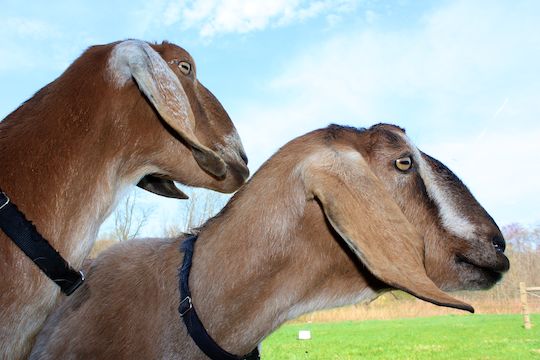
Seamus and Duffy are not our summer interns—those folks start next month. These guys are goats, 7 and 8 year old Nubian wethers (fixed males) that we are planning to use to help control multiflora rose and mile-a-minute on the preserve.
They are part of a prescribed grazing program that will also include a couple steers. Cattle eat only a little multiflora rose so the addition of goats might help clear these areas.
Seamus and Duffy are pets with a job. They come to us from Amazing Acres Goat Dairy in Elverson, a farm that is currently for sale.
Clearing land with goats is both a state-of-the-art management technique and the oldest idea around. I had read about managing them in natural areas for years but wanted to be sure they would help us achieve our specific land management objectives. Last year during a review of stewardship objectives we identified this as something we’d like to try. While we may not necessarily set up a mobile goat herd “strike team” we will see how they work out here.
Goat grazing is a form of “biocontrol” for invasive plants that—unlike the insect biocontrols usually considered throughout the world—can be withdrawn if not working out or when finished. But unlike successful insect biocontrol goats are not target-specific: they will eat almost any vegetation so careful location choices and fencing need to be in place.
Unlike a mechanical brushcutter or bush hog, goats don’t directly require fossil fuels to do their job. They can work on uneven terrain and places not accessible to tractors. I decided to try goats here because although I cleared it once, I know I don’t have time to return to this site to clear it every year—which is what it would take to bring the invasive plant population down to a manageable size.
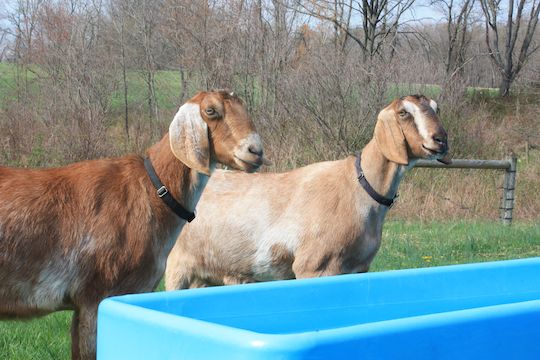
While the goats will receive all the credit for the work they do, there was a lot of background labor that went into preparing for them. I would like to thank goat consultant Yvonne Post who examined our site and confirmed that it would be suitable land for them. Jess Moore from Brandywine Conservancy shared with me how goats were used at their Laurels Preserve.
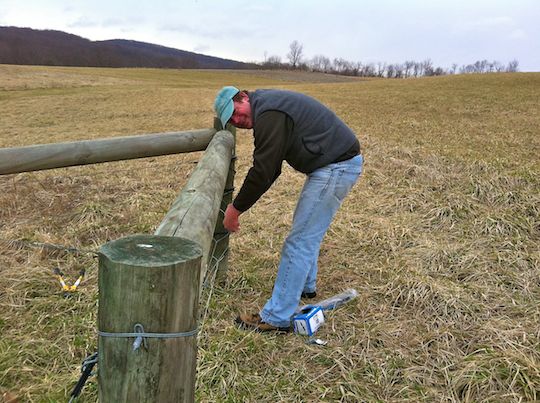
Jack Stefferud, a member of Natural Lands Trust’s Land Protection Staff (and a farmer at heart) and his son Erik (last summer’s intern) spent several cold, wet days this spring building fences for the goats.
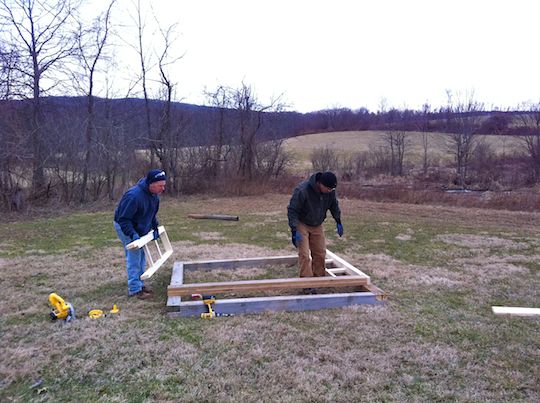
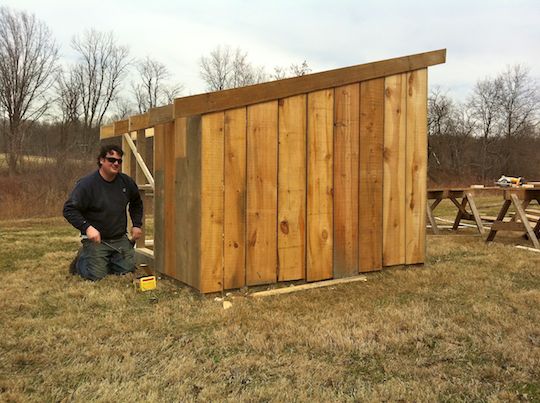
Thank you also to members of NLT’s Building Stewardship Staff: Steve Holmburg, Scott DeBerardinis and Luke DeBerardinis, who managed to fit into a few hours of their busy schedule the time to build a beautiful run-in shed for the goats, mainly out of materials we already had and inexpensive lumber they found locally.
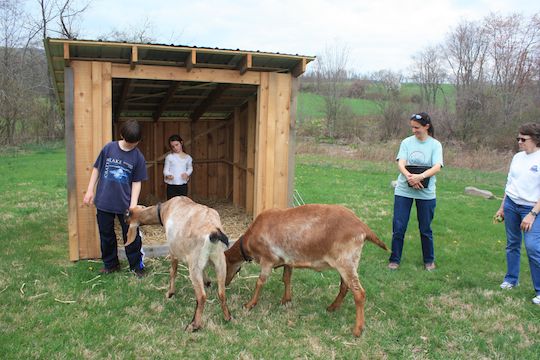
Many thanks go to Mary McCabe who located the available goats for us and as a large-animal vet, volunteering to look after their health. I’d also like to thank neighbor Katie Bartlett who picked up the goats in her trailer and brought them here. Thanks in advance to all of those who have offered to help look after the goats when I go away; I’ll be calling on you!
And a special thank you to Debbie Mikulak and Fred Bloom from Amazing Acres for offering us these marvelous goats.
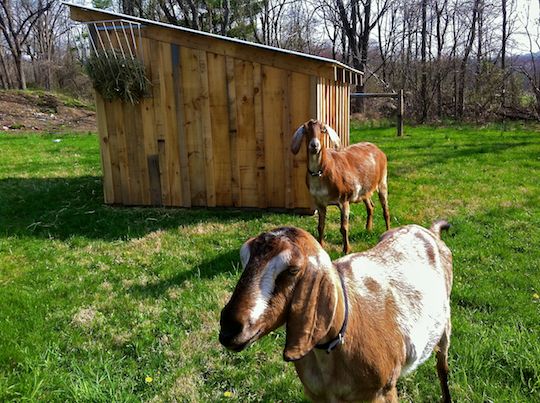
You may see Seamus and Duffy when you visit the preserve. They are incredibly friendly. Please don’t try to pet them over the electric fence—we don’t want you or them to get shocked. You may pet them through the gate (but don’t climb on it) but please don’t interrupt them too long from their important work. Please don’t enter the pasture unless a Natural Lands Trust staff member is present. If they have gotten out, there are phone numbers on the gate for whom to call to bring them home.
